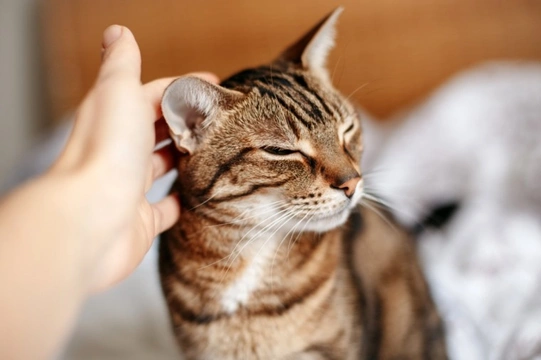
Oak processionary moth caterpillars: A spring and summer danger for cats
Oak processionary moth caterpillars are a type of caterpillar that, as the name suggests, live wholly or mainly in oak trees. They tend to be around during the months of May, June and July in the UK, although this can vary depending on the weather and what part of the country you live in.
What has any of this got to do with cats? Well, oak processionary moth caterpillars (let’s call them OPM for short) can be toxic to cats; and your cat doesn’t even need to come into direct contact with a caterpillar of this type to be placed at risk either.
Oak processionary moth caterpillars get their name because they move around in lines meeting nose to tail, hence the “processionary,” and they are most common in the South Eastern counties of the UK, although this is not a hard limit, and they do appear to be spreading more widely year-on-year.
As mentioned, they generally live on oak trees and so they’re more likely to pose a hazard to cats in the South East and in areas there are lots of oaks rather than in other regions and/or where there aren’t lots of oak trees; but this is not a firm rule.
With this in mind, it is a good idea for cat owners all over the UK to learn a little bit about oak processionary moth caterpillars, why they pose a danger to cats, how cats might come into contact with them, and how much of an issue they are if they’re found in your local area. Read on to learn more.
Why haven’t I heard of the oak processionary moth or their danger to cats before?
Even though oaks are something we think of as very British, the OPM caterpillar is not! This is an invasive alien species that has only been present in the UK at all since 2005, on trees imported to the UK from Europe.
Since that time they’ve survived and even begun to thrive here, and have gained a foothold in the South East of England, and appear to be spreading ever further north and west each year.
What do oak processionary moths look like?
Oak processionary moths have particularly long white hairs on their bodies, interspersed with shorter hairs. They’re not particularly exotic-looking or distinctive other than this, and unless you’re quite interested in moths and caterpillars in general, they will probably just look like any other caterpillar…
How do oak processionary moths pose a danger for cats?
So what’s the problem, and how can a caterpillar be a risk to a cat? Cats aren’t exactly well known for having a lot to do with caterpillars, and they’re not the sort of things that cats tend to spot and pick up to eat or bring home as prey.
Well, it is those mentioned hairs on the caterpillar’s body that makes the oak processionary moth caterpillar dangerous to cats – and there’s more bad news too, because the same effects they can have on cats can also happen to people!
The OPM caterpillar has literally thousands of hairs, and these can be shed from their bodies and blown off by the wind, which means people and/or cats don’t even have to touch a caterpillar directly to come into contact with shed hair.
This hair contains a substance called thaumetopoein, which is irritating to the skin and eyes, and if you or your cat touch it, will make you or them itchy, and can cause more acute problems too.
Depending on the level of contact your cat has with the caterpillars or their hair, they can also cause swelling of the tongue and nasal passages, eye irritation and conjunctivitis, drooling, and even breathing difficulties if their mouth, throat, or nasal passages swell.
However, for these more acute issues to occur, a cat would generally have had to have had pronounced direct contact with oak processionary moth caterpillars.
How might cats be placed at risk by oak processionary moth caterpillars?
You might well be wondering how a cat might come into close contact with oak processionary moth caterpillars as to be at risk of those more acute symptoms mentioned above, and it is fair to say that this level of contact is certainly uncommon.
However, cats often climb trees and so might come into physical contact with processions on trees, and they will tend to investigate such things closely, even touching them with their nose or mouth as well as paws.
The processions aren’t restricted to trees either, and they do sometimes walk along the ground, where they are even more likely to catch your cat’s attention.
How should I proceed if my cat comes into contact with an oak processionary moth caterpillar?
If you know or suspect that your cat has come into close contact with oak processionary moth caterpillars, firstly try to wipe off their face and coat to remove any hairs that may be present. Monitor for signs of irritation or more acute symptoms, and contact your vet if concerned, particularly if your cat seems distressed or is having difficulty breathing.
In general, if you know OPM caterpillars are around in a certain tree or area, try to encourage your cat away from it. Also, bear in mind that this is an invasive species, which should be reported to The Forestry Commission if they are not already aware of their presence in a certain area.



